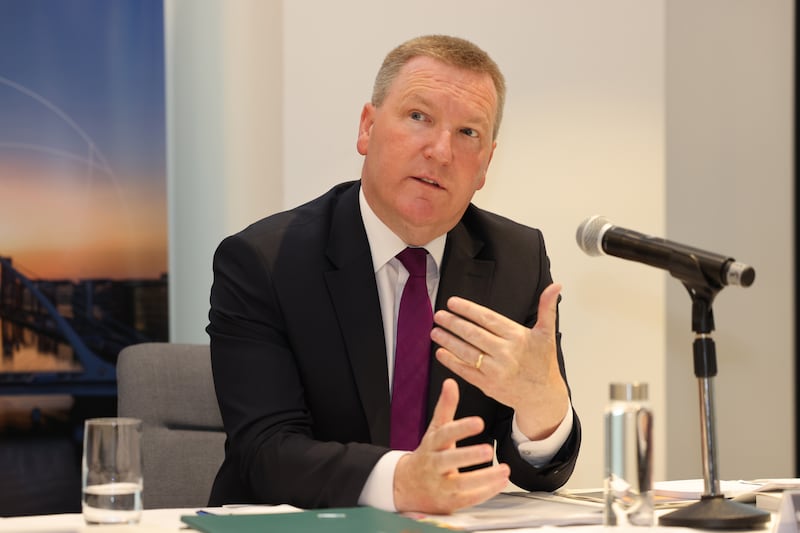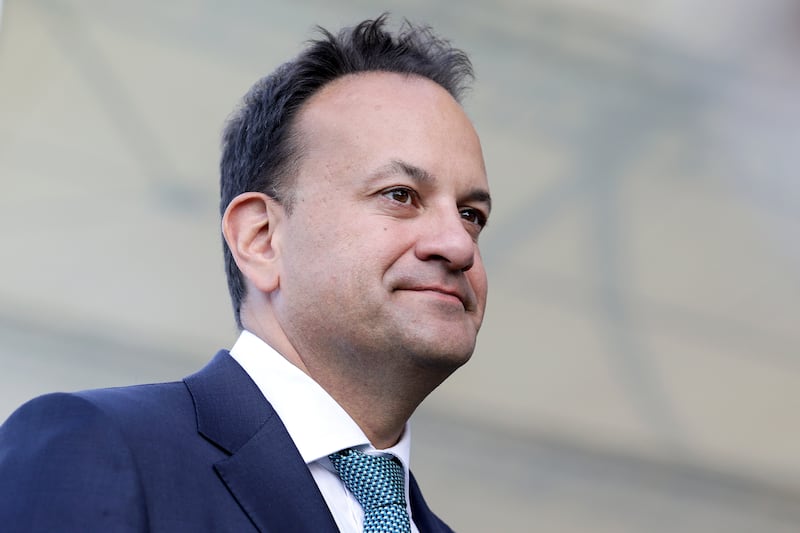The State’s coffers may be awash with money, but cash-strapped households around the State shouldn’t expect too much of a bonanza this forthcoming budget day.
While tax yields are at a record high – for the seven months to end-July, just under €48 billion had been collected, a 10 per cent bump on 2022 – the Government has vowed that spending and tax cuts will be tightly controlled come October 10th. So, while the budget surplus is expected to reach a record €65 billion over the next four years, buoyed by corporation tax receipts, the largesse won’t necessarily make its way into our pockets.
The Government says it plans an overall budgetary package of some €6.4 billion this year.
“I guess the balance the Department of Finance is trying to strike is between improving households, but not fuelling further inflation in the economy,” says Olive O’Donoghue, a tax partner with KPMG.
READ MORE
With just €1.1 billion of the amount being set aside for tax cuts – down slightly in fact from the €1.13 billion set aside last year – there isn’t scope for any major changes on the tax front. “There is very, very little to play with here,” says O’Donoghue.
Katie O’Neill, a director with PwC Private, agrees. “It’s the same sort of package as last year, so we’re not going to see any kind of real giveaways. It’s a fairly standard, middle of the road budget,” she says.
However, with an election looming next year or in the early part 2025 – it has to be held by March 2025 – “now is the chance” to offer some surprises says O’Donoghue, as Budget 2025 might be too late.
“I suspect there’ll be other little bits and pieces around the edges,” she says.
Tax measures
What is certain is that, all other things being equal, you will pay less tax on your income in January than you are doing today. What’s not as clear is just how much less. During the summer, Minister for Finance Michael McGrath gave a commitment to income tax reductions “through possible changes to USC and income tax”.

“I think it’ll be very much focused on ensuring that individuals aren’t impacted by fiscal drag, and pushed into a higher bracket just because of wage inflation,” says O’Donoghue.
In practice, what this likely means is a widening of the standard rate band to keep more middle income earners out of the top tax rate, with some changes possible also to the universal social charge (USC).
“I wouldn’t expect any changes to the rates,” says O’Neill, adding, “but a change to USC is always welcome. It’s been around now for quite some time and it’s not going anywhere.”
O’Neill would also like to see the three percentage point surcharge for people who are self-employed being removed.
There will likely also be an increase in the minimum wage – a 12 per cent increase has been proposed by the Low Pay Commission but employers are lobbying hard against an increase of that scale. Any increase in minimum wage could trigger tweaks to PRSI/USC, so that workers get to keep the benefit of the increase.
And this may be it, as tax cuts are expensive.
According to Revenue calculations, a one percentage point cut in the 4.5 per cent rate of the universal social charge would cost almost €500 million a year, while widening the standard rate tax band by €1,500 would cost €343 million a year.
And what of the proposed introduction of a third tax rate?
“It’s certainly dead in the water for now,” says O’Donoghue, of the proposal which was aimed at benefiting middle income earners through a new rate of about 30 per cent. Given the ongoing review of the personal taxation system, “I wouldn’t expect to see any dramatic changes to the income tax system”, she adds.
Capital
When it comes to capital gains tax (CGT) and capital acquisitions tax (CAT), tax experts are less certain of any substantive changes.
“It’s absolutely something we would welcome,” says O’Donoghue of any changes to the inheritance tax regime, but does she think it will happen? “I suspect not.”
At a time of rising house prices, the yield from capital acquisitions tax has risen – from €400 million back in 2015 to €605 million in 2022, according to Revenue figures. But changing the regime might cost too much
Given inflationary pressures in recent years, she says there is now a “real concern” that more people, depending on the size of their family and the location of their home, will be dragged into the CAT net.
“More and more, it’s average people who can be caught by inheritance tax; it’s not just the super wealthy,” she says.

The last time the parent-to-child threshold was changed was back in 2019, when it was increased from €320,000 to €335,000. The group B threshold, for close blood relatives, was last changed in 2016, as was the group C, so-called “stranger” threshold.
At a time of rising house prices, the yield from CAT has risen – from €400 million back in 2015 to €605 million in 2022, according to Revenue figures. But changing the regime might cost too much, given the expected budget for tax changes.
According to the Tax Strategy papers from this summer, cutting the CAT rate back to 30 per cent would cost about €60 million in a full year, while pushing the group A threshold up to €400,000 would cost €52 million a year.
Housing
Given the much-discussed flow of landlords leaving the rental sector, O’Donoghue suggests that a positive move would be to align the tax treatment of small landlords with that of a trading business. This would reduce the amount of a landlord’s income that would be subject to tax, as there would be more deductions – such as for local property tax, which is currently now allowed.
To keep landlords active in the market, O’Donoghue also suggests some sort of CGT rollover relief, whereby landlords could avoid CGT when selling, by reinvesting the proceeds back into the market.
For renters, there may be an enhancement to the rent credit but, as O’Donoghue notes, “uptake has been very poor” thus far, so its impact may not be as significant as would be desired.
“Given the budget there to spend on tax, it’s not likely to be a showstopper amount,” says O’Neill, of any potential change to the €500 credit.
For those who have seen the cost of their mortgage jump substantially in line with rising interest rates, any reintroduction of mortgage interest relief could help ease the burden. There have been calls to bring back the relief, which was scrapped in full in 2017, but O’Neill isn’t positive about the likelihood of this.
“I’m not sure it’s something we’ll see,” she says.
Help to Buy, which is due to run out on December 31st, 2024, and offers at tax rebate to first-time buyers of up to €30,000, will likely be extended.
In order to make Ireland more attractive for international workers and businesses, O’Donoghue suggests making it easier for companies to pay rent for their employees by scrapping benefit in kind (BIK), which is payable on such a benefit, for a specific period of time, and to specific types of employees, such as those earning less than €50,000, for example.
Cost of living measures
If tax cuts are to be minimal, households can expect to benefit from another round of measures aimed at easing cost of living pressures. The aforementioned €6.4 billion package does not include any one-off measures Minister for Finance Michael McGrath might announce to help ease cost of living pressures.
Child benefit could be doubled up once more, which would see an extra payment of €140 per child made at some point during the year
“With the election looming in the background, and everyone cognisant of that, [one-off measures] are a way for them to show they’re spending and giving, without having long-term consequences,” says O’Neill.
[ The Irish Times view on Budget 2024: the Government needs to focus its effortsOpens in new window ]
[ Targeted mortgage relief on cards for Budget 2024, Varadkar saysOpens in new window ]
As noted in the recent tax strategy papers as part of a discussion on the potential for refundable tax credits to reduce tax liabilities, direct supports, such as an electricity credit, “are a better and simpler means of targeting support and providing assistance to low income households, as opposed to through the tax system”.

“It’s easier to put money quicker into people’s pockets outside of the tax system,” agrees O’Donoghue.
The electricity credit, for example, which was paid out a rate of about €600 last year, may make a return, as might a double child benefit payment. Child benefit could be doubled up once more, which would see an extra payment of €140 per child made at some point during the year.
And there will also likely be increases to a raft of welfare payments, including the State pension.
On the childcare front, Taoiseach Leo Varadkar said earlier this year that there would be a further reduction in the cost of childcare for families, “you can be sure of that”. How much of a reduction however, remains to be seen.














